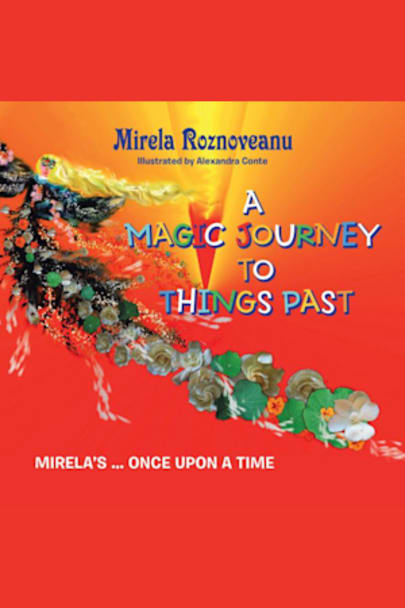The book brings together five generations through the grandmother’s memories. As the recorder of time, her role is to keep the family’s history and traditions alive. Curiosity, magic, and childhood’s mythology are the thread of adventures. They range from the grandmother’s early age, to those of her son, and granddaughters all taking place on two continents at different stages of the former and … and present century.
more



Mirela Roznoveanu proves how one’s childhood reality and fantasy world intertwines. The transmission of her ancestor, culture, heritage and tradition are the attributes from her grandparents’ childhood to her own granddaughters’ legacy. It’s a journey that passes through from past to future, from old world to new, from fairy tales to reality. Can cults and spells transmit as well? Today she reflects on behavior, attitude and beauty of her own inheritance.
The unloved heartbroken child has been surrounded by hungry dogs in the barking village. Mom leaves her alone for visits and errands. In the winter clothes she runs away alone to cross the river to save her life. On her return the dogs bite her. They leave her memorable feelings of fear, guilt and seclusion. Or the snake that has been circling around her courtyard giving her pleasure and chills simultaneously. Her mother’s aloof behavior bewitches her psychologically. She reminisces the roast game children were playing. One must sit in the center and touch another palm. The one who is touched with the eyes closed must guess, otherwise there would be consequences. That child is roasted. She cries.
On her sixth birthday while playing alone a snake appears. A lady yells, “ leave the snake alone.” In the village they believed the snake is their protector. Then one day a villager laughing throws the snake on the ground in pieces. She feels she lost a friend. Was it subconscious? Mirela says from that moment on the “bad omen” starts. Is it a spell or a myth? Entangles in the hills with the lizards while a woman tries to snatch her gold earrings. She runs. Her toys were hedgehog and horses.
Oh, how she is craving to be old enough to reach to the neighbor’s pears, and quinces. Dares to take chances. She is scolded at going to the crop fields picking poppy seeds. Later Mirela’s own son tells his own story about his own dream. He calls it “Pleasure Planet.” The stork asks him, “what mother would you like?” He replies, “I want my mother Mirela.” The stork babies sleep in planet pleasure and their mothers read fairy-tales. The son dreams in the Land of Storks. The storks say to him they would only come back when he himself has his own children.
Mirela son’s fantasy is at the pleasure dream. The storks actually did bring him two daughters of his own. All of her nightmares, shocking tales, spells, impact her granddaughters. Creating family values harmonize intricate memories. As the author eats lunch with her granddaughters, presents ancestors’ past analogy to them. There is a correlation to the present that things pullback to past. Their beauty, intellect and more then anything else their intuition, inquisitiveness, premonition fascinate Mirela of Greek mythology, Paris of Troy that she left her husband. As she calls her daughter Paris, says behind a word there are other hidden meanings. They are derived from past myths, and events.
I recommend this captivating book for children to create and understand their own fantasy world. On the other hand, adults can see how behind every action there is an unknown secret. It’s a journey between fake and real, past and future. Mirela transmits her memories and family values. Reality extracts ideas, habits, fears, creations. Because of it she wanted to be a writer. Where does it all come from and end? The imaginative invisible implications are the connotation to the real world. Seta Shishmanian